Are you thinking about visiting Hakone but you are not sure of what to do there? Then you have come to the right place. In this blog, I will share with you the best way to spend one day in this area and enjoy your time there as much as possible.
When planning our trip to Japan, we were sure that our itinerary would include a day trip to see Mount Fuji (if the weather allowed it). Many people choose to visit the Five Lake region and in particular, Kawaguchiko to do so. However, due to weather conditions, it is not always possible to see Fuji. By choosing Hakone, we were making sure that in case Fujisan was not visible, there would still be plenty of things to do in the area. In the end, we got really lucky because not only we had an amazing time in Hakone, but we also got to see Mt Fuji several times throughout our day.
To make it even better, getting to Hakone by public transport is much easier and faster than to Kawaguchiko. So if you are like us and want to enjoy a day in a beautiful and varied area of Japan, this is just the blog for you.
TABLE OF CONTENTS
HAKONE
Hakone is a mountainous area that comprises a total of 7 villages at the border of the Fuji-Hakone-Izu National Park, within the Kanagawa prefecture. Being less than 100km away from Tokyo, it is the perfect destination for a day trip from Tokyo. This has made it quite popular not only for tourists but also for Tokyo citizens, looking to disconnect from the hustle and bustle of the city.
Hakone is famous for being one of the places where you can get incredible views of Mount Fuji. However, there are many other activities to do here, particularly if you are a nature enthusiast. Here, you can find some very nice hiking routes, enjoy impressive volcanic areas, and sail along the beautiful Lake Ashi.
On the cultural side, it has many interesting sites as well. Spend some time admiring the art exhibitions at the Hakone Open Air Museum or learn about Japanese history while visiting the Hakone Checkpoint. Finally, if you’re just looking for some relaxing time in nature, why not visit one of the many natural onsens (Japanese hot springs) in Hakone?
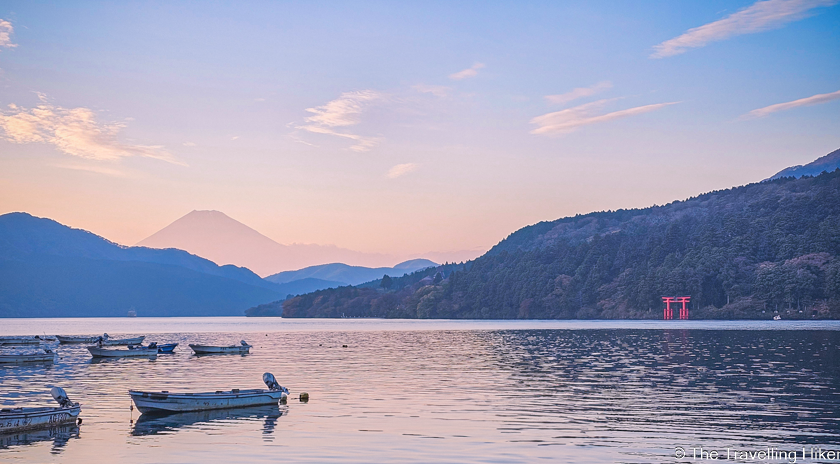
HOW TO REACH HAKONE FROM TOKYO
Reaching Hakone from Tokyo is quite easy and comfortable, which is also one of the reasons that made us choose it as our first day trip from Tokyo.
First, get a train from any of the major stations in Tokyo to Odawara Station. This can be done in three different ways.
- If you have the JR Pass, you can get a Shinkansen or bullet train to Odawara Station. This is what we did when we visited Hakone and it was very comfortable.
- If you don’t have a JR Pass, you can use the Hakone Free Pass (more on this later) and get an Odakyu line regular train to Odawara. The inconvenient about this option is that this train is not as fast.
- If you don’t have a JR Pass but you don’t want to lose time, you can get the Romancecar from Shinjuku to Odawara. To get this train, you will have to pay a small supplement to your Hakone Free Pass.
Hakone Free Pass
The Hakone Free Pass is a ticket from the Odakyu line that will grant you unlimited rides on all of the different transports for 2 or 3 days. In addition, it will also get you access to discounts on many of the activities in the area.
Good to know: Even if you are only visiting for a day, it is very interesting to get the Hakone Free Pass. To visit Hakone, you will have to get around using a lot of different transports, and paying individually is more expensive than if you get the Hakone Free Pass.
When buying this pass, there are different options to choose from:
- Choose the length of the validity of the pass between 2 or 3 days.
- Choose the departing station between Shinjuku and Odawara. If you have the JR Pass, the obvious choice is from Odawara.
- Finally, if you don’t have the JR Pass but are also planning on doing a day trip to Kamakura, you can get the Hakone-Kamakura Free Pass.
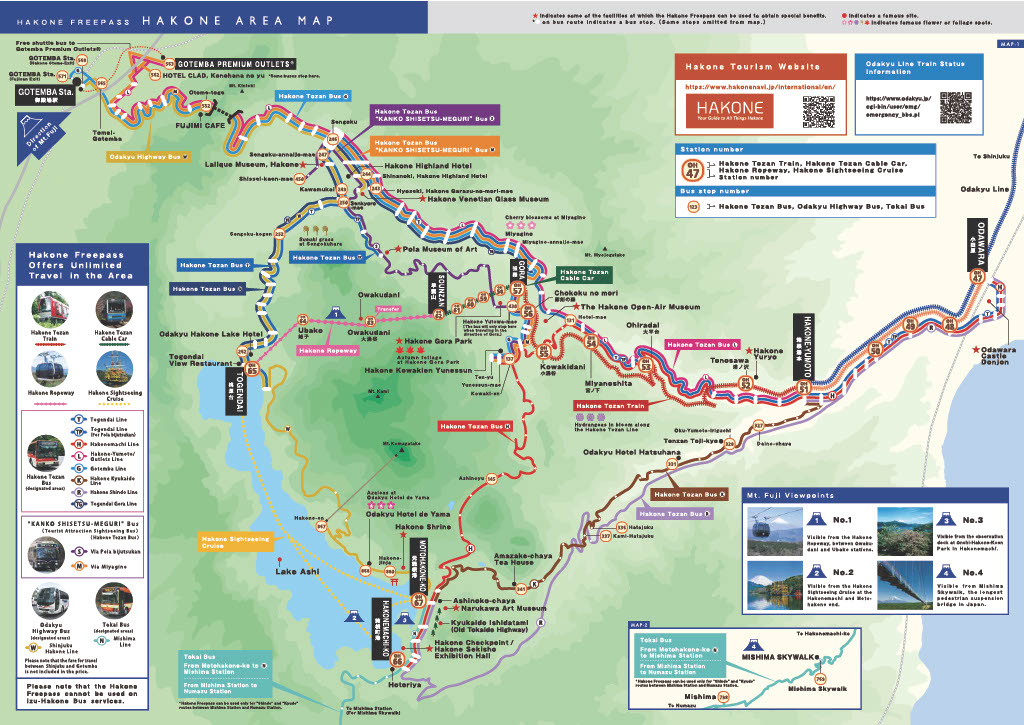
Map provided by the Odakyu Site (Hakone Free Pass).
Transportation in Hakone
To visit and move around this area, you will have to use the following different forms of transportation.
- Hakone Tozan Train
- Hakone Tozan Cable Car
- Hakone Ropeway
- Hakone Sightseing Cruise
- Hakone Bus Lines
ONE DAY IN HAKONE: BEST THINGS TO DO
Here is everything we did during our visit to Hakone. Just keep in mind that these are not the only things you can do here. At the end of this blog, I will list some other options, in case you want to modify this itinerary or if you have some extra time in the area.
Hakone Tozan Train
As soon as you reach, Hakone-Yumato, you have officially arrived and it is time to start exploring this beautiful region. The first thing we did was to get the Hakone Tozan Train to start gaining elevation in the mountains. This train connects Hakone-Yumato with Gora while it zigzags along some steep slopes while using the switchback method.
While riding this train, we were able to get a first impression of this region and admire the views. Since we visited in early November, we got to see some beautiful autumn colours through the train’s windows. However, if you visit the area in June, this train is called the hydrangea train.
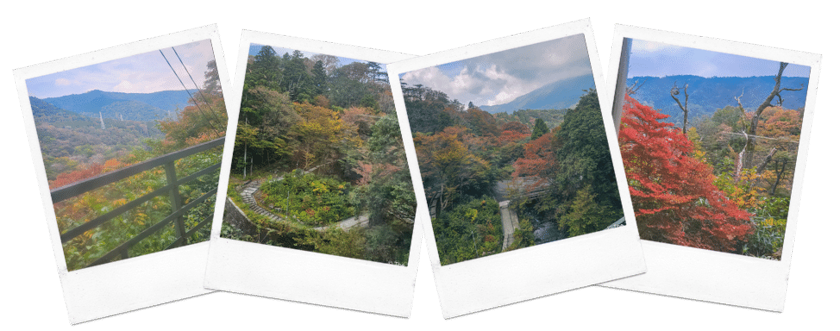
Hakone Open Air Museum
Instead of going all the way directly to Gora, we stopped at the previous stop and visited the Hakone Open Air Museum. As its name states, this museum is a park and several pavillions where you can admire different sculptures from famous artists like for example Miro, Picasso, or Rodin.
This museum was a very nice surprise and have to say it was one of my favorite parts of the day. The sculptures merge with nature creating a magical environment. Trees, small creeks, ponds, and mountains mingle perfectly with the different art displays.
We spent more or less an hour and a half exploring this museum and loved every second of it. I definitely recommend including this museum in your Hakone itinerary.
Practical information:
- Opening hours: The museum is open year-round between 9:00 and 17:00.
- Ticket Price: 1600 Yen/adult or 1400 Yen (if you have the Hakone Free Pass).
- Always check the museum’s official website to obtain the latest updated information.
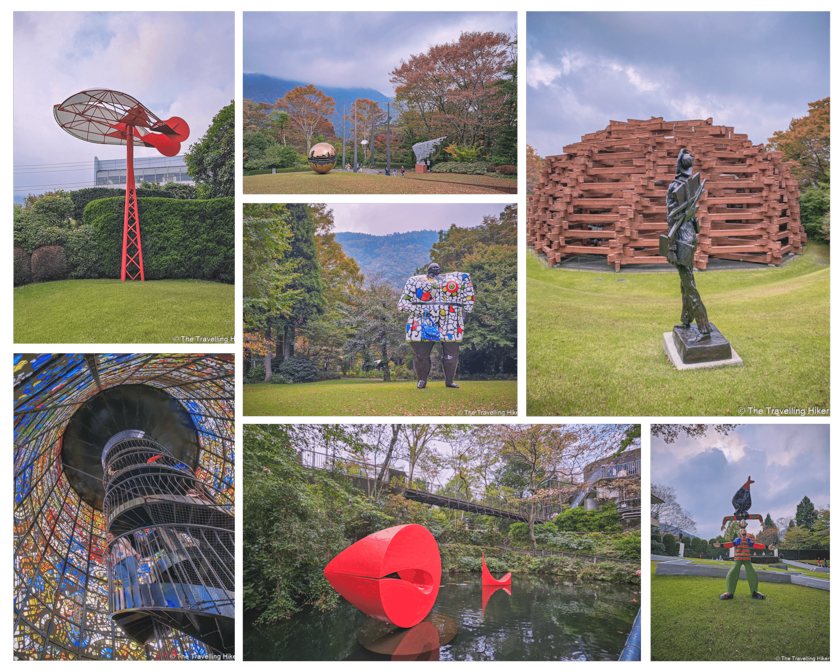
Hakone Tozan Cable Car & Ropeway
After the museum, we got to Gora and hopped on the Hakone Tozan Cable Car. This was the only moment in the whole day that it was absolutely packed and had to wait in line for the cable car.
The cable car helps climb the steep incline between Gora and Sounzan Station. In normal conditions, this might have been a nice ride but the train was so full that we were very uncomfortable and didn’t enjoy the ride at all.
At Sounzan, we changed transport into the Hakone Ropeway, which would take us to Owakudani Volcanic Valley. Contrary to the cable car, the ropeway was a very nice ride and the gondolas were not even at maximum capacity.
The climate of this ride is when you reach and pass 130 meters above Owakudani Volcanic Valley. It is impressive to see the sulfur fields and fumes coming out of the ground.
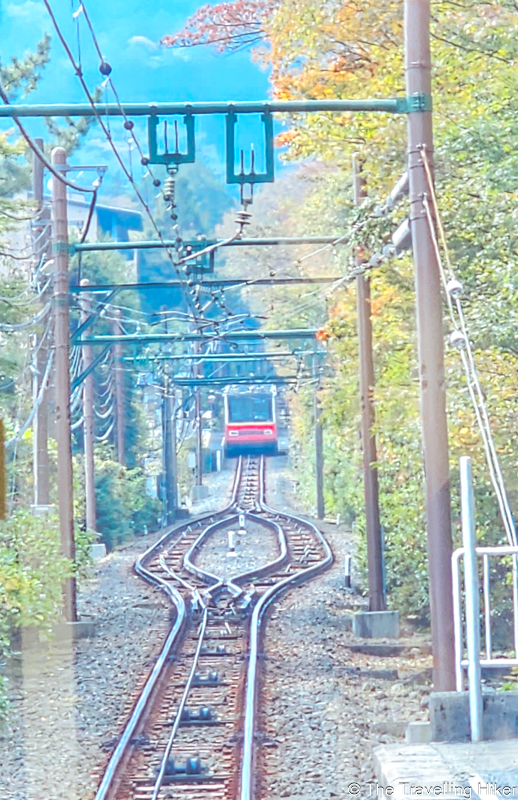
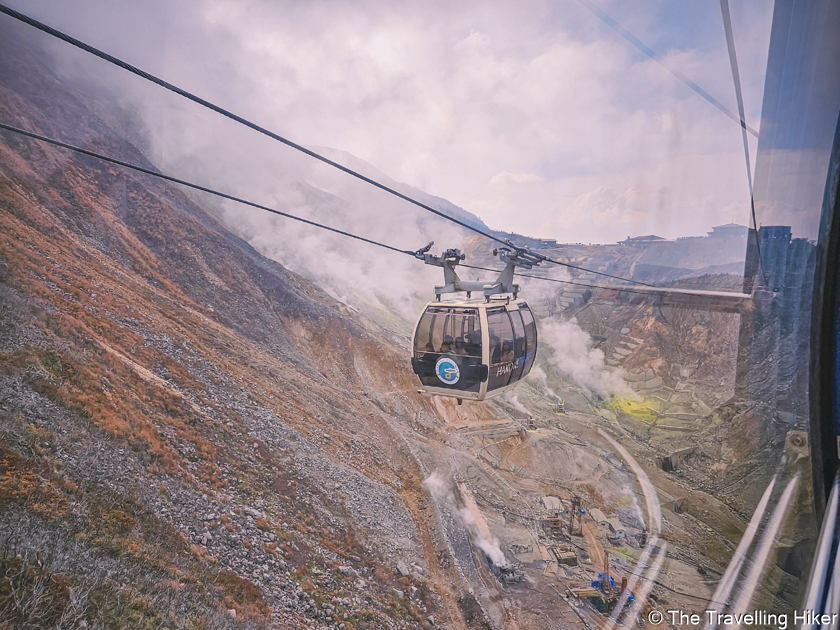
Owakudani Volcanic Valley
Owakudani is a valley that was formed more than 3000 years ago as a result of a volcanic eruption. The valley (known by locals as the valley of Hell) is full of active sulfur potholes with colors that create a beautiful contrast against the rocks.
As soon as we got out of the gondola, we started smelling the characteristic “rotten eggs” odor from sulfur. But don’t let this put you out of visiting this part of Hakone, you soon get used to it and stop noticing. We spent some time admiring these amazing views from the different observation platforms that were located around the area.
In addition, if you want it is possible to do a short hike in the off-limits active volcanic zone. This activity needs to be reserved in advance. More information about the Owakudani Nature Trail can be found here.
Good to know: Sometimes the concentration of sulfur in the air at Owakudani is so high that they close the area to visitors. Make sure to check if it is open before coming here.
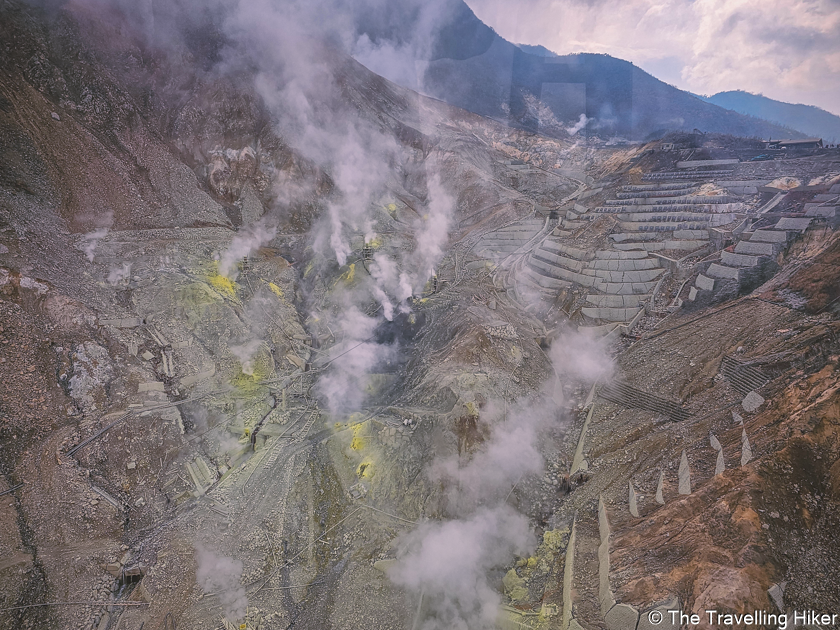
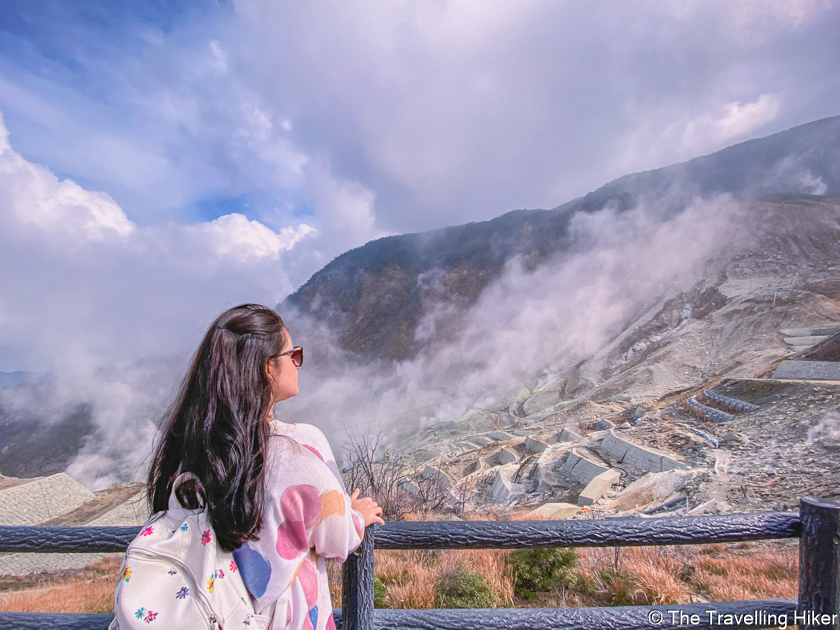
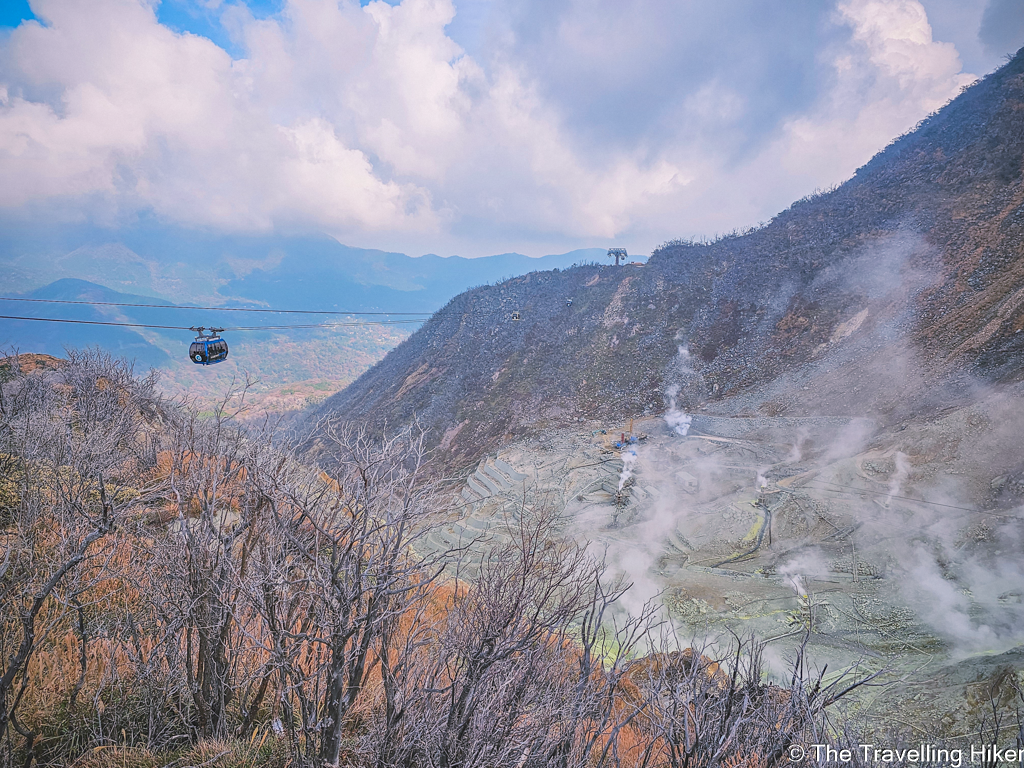
Tasting Owakudani Black Eggs and Curry
By this time it was lunch time so we decided to try two of the Owakudani specialties: the black eggs and black curry.
The Black Eggs of Owakudani are regular eggs that are boiled in water that contains sulfur and iron, which gives them their unique color. According to the local’s beliefs, if you eat these eggs you will gain 7 extra years of life. This was a fun little experience, although don’t worry about the color, they tasted like regular boiled eggs.
Since a couple of boiled eggs was not enough for lunch, we also tasted the Owakudani Black Curry with views of the volcanic fields.
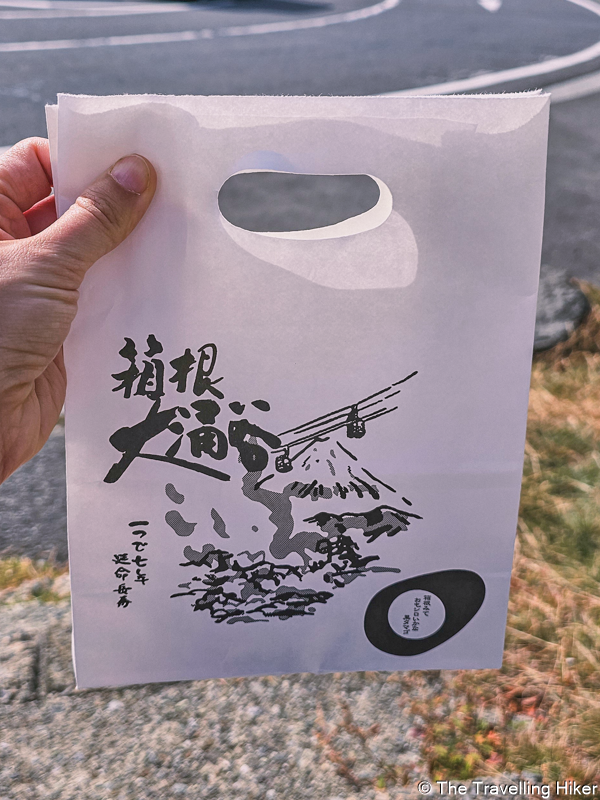
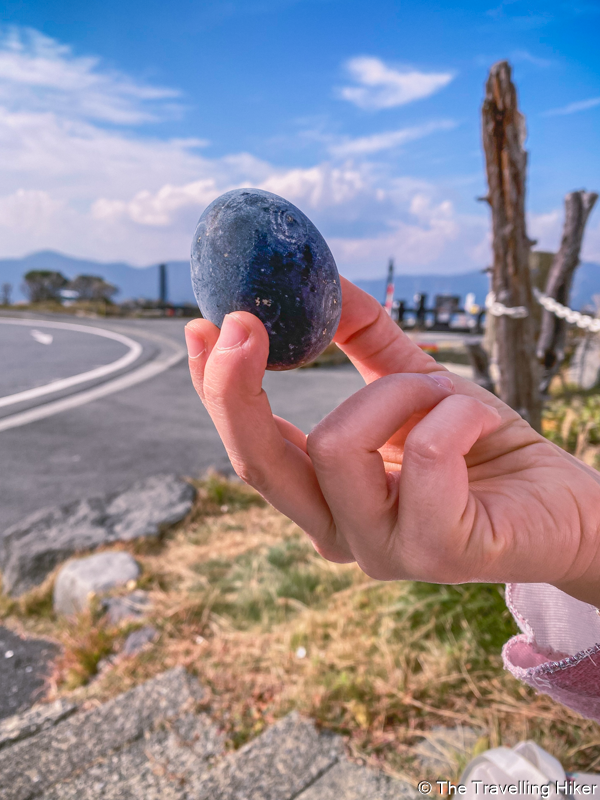
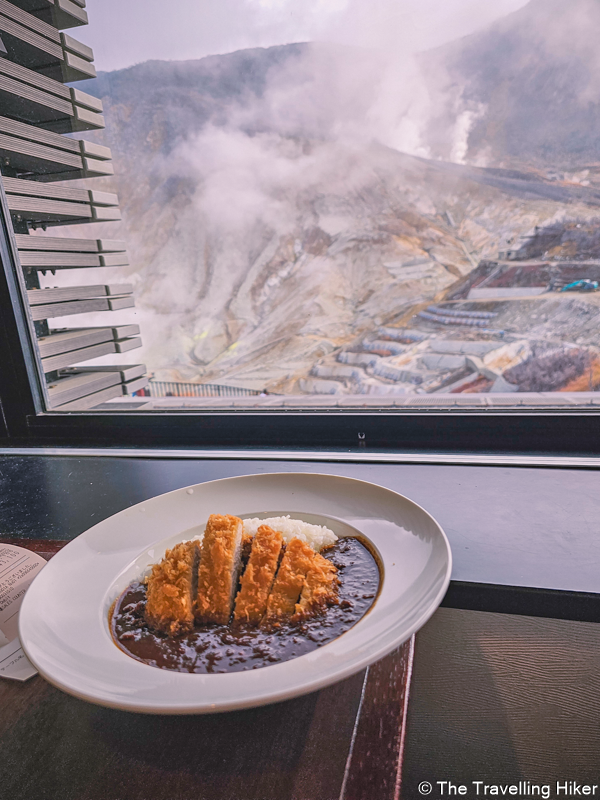
Hakone Ropeway to Lake Ashi
From Owakudani, we took again the Hakone Ropeway to descend to Lake Ashi. Just as we were about to board the gondola, the clouds opened up a little bit and it appeared! Mt Fuji was in front of us! The photos don’t do it justice but it was impressive to see it!
The ride down to Lake Ashi, on top of seeing Fuji, was quite scenic. The different trees with their many autumn colors, the lake surrounded by Mountains, and Fuji in the center of the scene. We literally took hundreds of photos and videos!
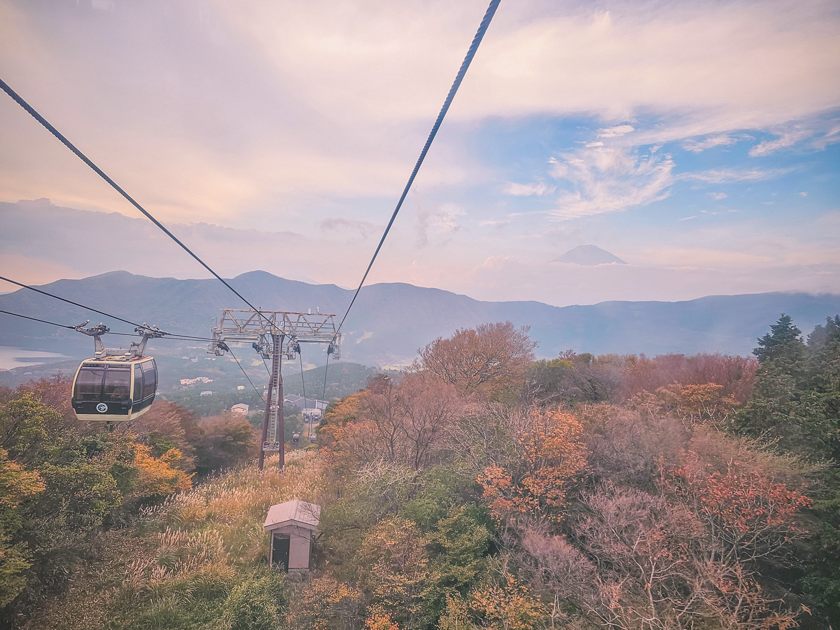
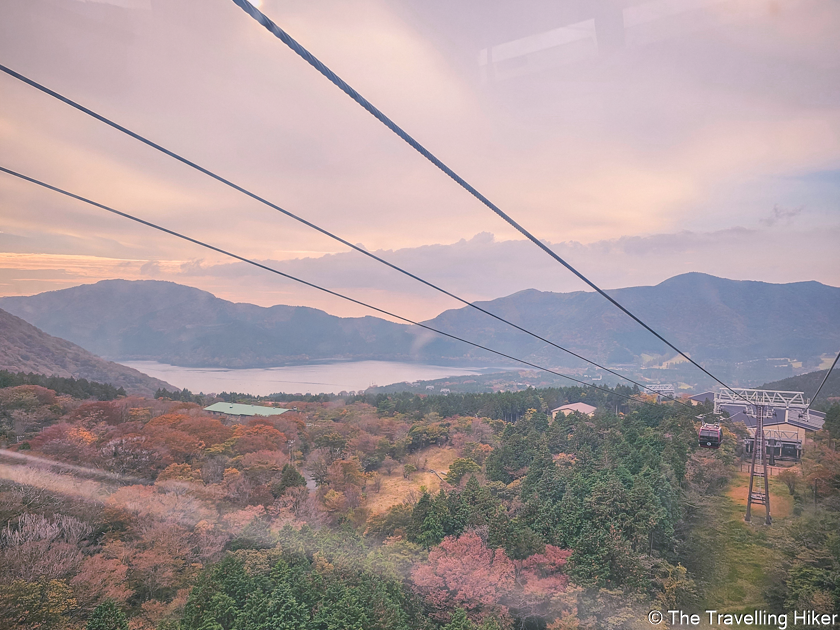
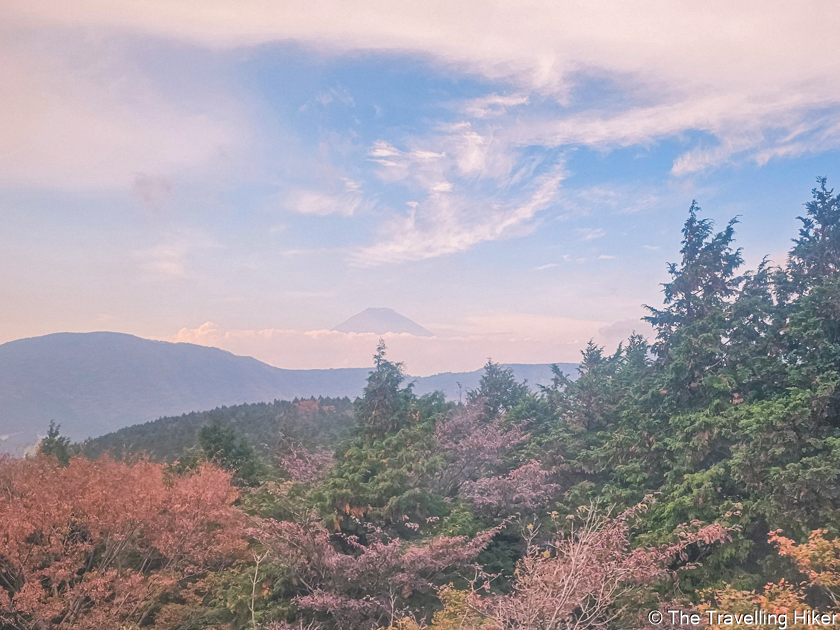
Lake Ashi
At Togendai, we boarded the Hakone sightseeing cruise, which makes two stops, one at Hakone-machi and the second one at Motohakone. The cruise is a pirate ship that sails along the beautiful Lake Ashi. From the ship deck, you will be able to admire the lake with the mountains surrounding it as a backdrop and two beautiful shrines on the shore of the lake. It was a quite relaxing and peaceful moment.
If you’re visiting the area, it is possible to hike around the lake instead of taking the ship. We would have loved to do this but this was just a short day trip for us, so we choose admiring the view from the ship’s deck.
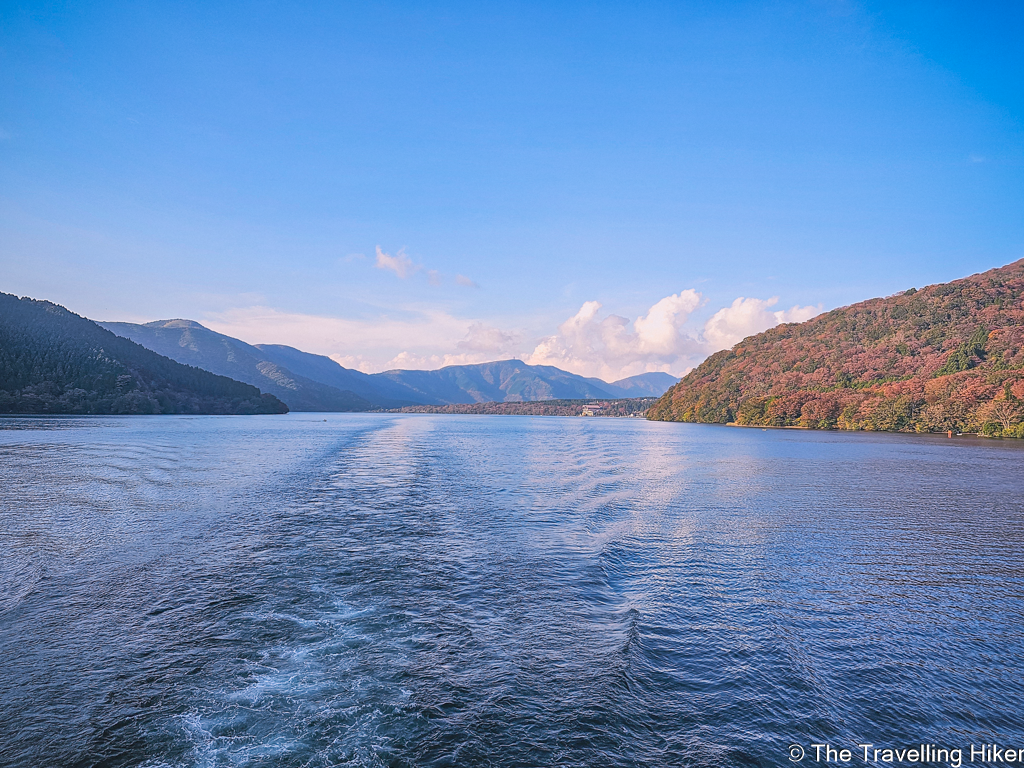
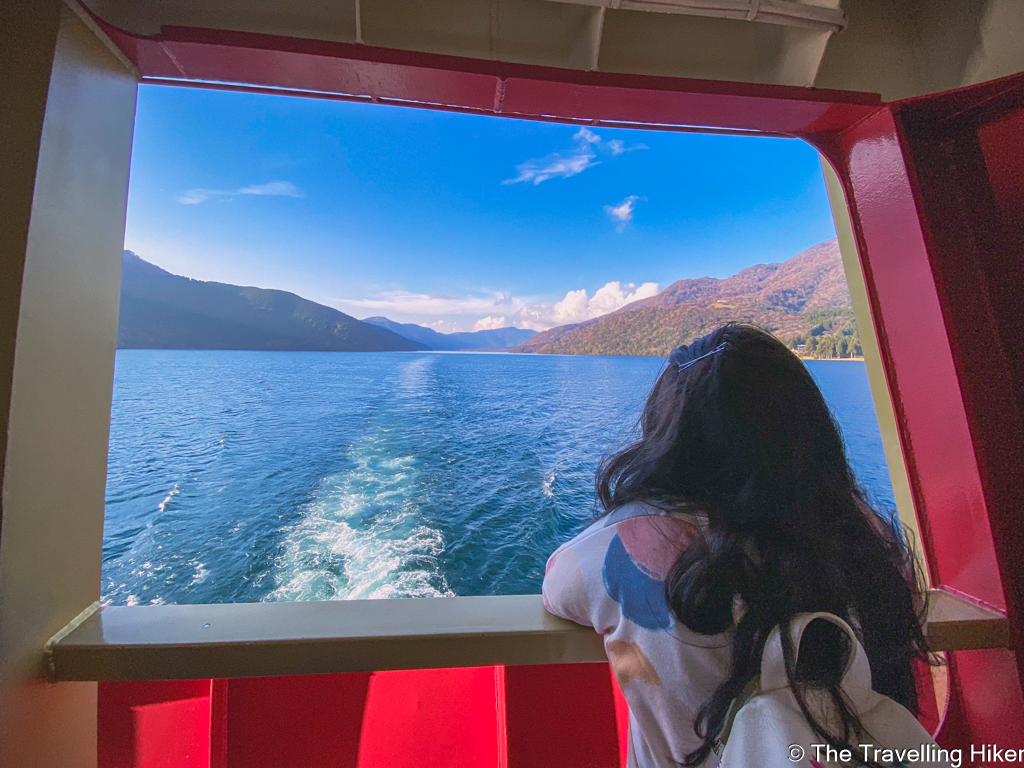
Walking Around Lake Ashi
We hopped off the ship at Hakone-machi and decided to walk next to the lake to Motohakone. This is not mandatory, if you want you can stay on the ship and continue sailing to Motohakone. We just love a good hike next to a lake!
The path that goes next to the lake is a beautiful walk with trees framing the way. Between these two small villages, there was also the Imperial Park, on top of a hill where we got to see Mt Fuji again. The sun was slowly starting to set and it was the perfect most beautiful sunset and the best way to end our visit!
Once we arrived in Motohakone, it was time to return to Hakone Yumoto by bus. This was also a bit uncomfortable because the buses were also so full and we were standing for the full 40 minutes that takes to reach it. Before catching the train to return to Tokyo, we explored the main shopping street there. We were hoping to buy a very famous honey cheesecake from the Grand Riviere shop but unfortunately, it was sold out.
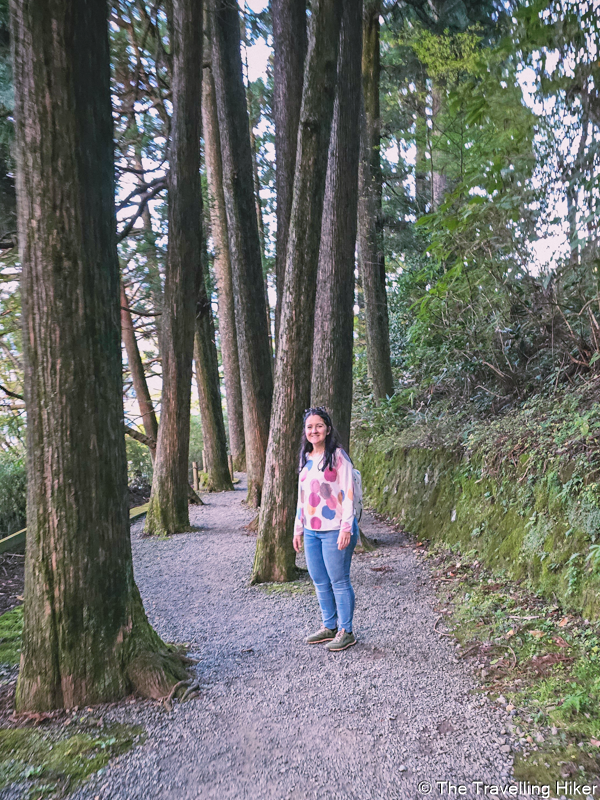


OTHER THINGS TO DO IN HAKONE
If you have some extra time in Hakone, there are plenty of other things to do here. Here is a summary of the many things that I would have liked to try if I had stayed in the area for a couple of days.
Hakone Yumoto
- Walk along the Sukumo River.
- Shopping for local pastries in the main commercial street. There are many local cookies and pastries to try such as the onsen manju, a sort of steemed sweet dumpling, or senbei cookies.
- Watch the Tozan Train cross the Hayakama Bridge.
- Feel at peace at Soun-ji temple or Shoganji temple.
- Relax in one of the famous onsen (Japanese Hot Springs) such as Tenzan.
Gora
Motohakone
Here, there are many other places to visit:
- The beautiful Hakone Shrine, with its floating torii gate at the border of Lake Ashi. This is another of the highlights of Hakone and I definitely would have liked to visit this place. However, by the time we arrived in Motohakone, it was almost we had only 30 minutes left to visit the shrine. In addition, I had read many reviews that there is usually a 1-hour wait to get the iconic photo with the Torii gate, so we decided it was not worth it.
- Kofuku-in Temple.
- Narukawa Art Museum.
Hakone-machi
- Hakone Checkpoint: Hakone used to be an important checkpoint of the old Tokaido route, which joined Tokyo and Kyoto during the Edo period.
ACCOMMODATION
If you have some extra time and want to make your visit an overnight one, you can book accommodation that offers an onsen bath. The most popular area is Hakone Yumoto, but there are many possibilities in the other villages too.
Important: The average price for accommodation here is on the pricier side, particularly if you are looking for a ryokan with an onsen bath. However, it is an experience and most ryokans include a traditional dinner and breakfast served with it.
Here are some recommendations, I would choose for myself.
MAP WITH ALL LOCATIONS
And that’s it for this week’s blog. I hope you liked it and found it useful. Let me know what you think in the comments!
DISCLAIMER: Did you know? This blog uses affiliate partnerships. When you click and book or make a purchase through one of my blog posts, I may receive a small commission (at no extra cost to you). Thank you for supporting The Travelling Hiker!
OTHER ARTICLES ABOUT JAPAN
- PLAN A TRIP TO JAPAN ON YOUR OWN
- THE BEST GUIDE TO TOKYO’S NEIGHBORHOODS
- THINGS TO DO IN ASAKUSA
- THINGS TO DO IN CHIYODA
- BEST THINGS TO DO IN ODAIBA ISLAND
- 3 AMAZING DAY TRIPS FROM TOKYO
- HOW TO SPEND A DAY IN HAKONE: BEST THINGS TO DO
- A DAY TRIP TO NIKKO FROM TOKYO
- A DAY TRIP TO KAMAKURA FROM TOKYO
- THE 11 BEST THINGS TO DO IN TAKAYAMA
- THE PERFECT DAY TRIP TO SHIRAKAWA-GO
- THE ULTIMATE HIROSHIMA TRAVEL GUIDE
- MIYAJIMA ISLAND – THE BEST THINGS TO DO
- A DAY TRIP TO HIMEJI AND KOBE
- 3 DAYS IN KYOTO ITINERARY
- A DAY TRIP TO NARA AND OSAKA
- 4 DAYS IN TOKYO – THE BEST ITINERARY
- THE BEST THINGS TO DO IN SHIBUYA, TOKYO
- THE BEST THINGS TO DO IN MINATO, TOKYO
- THE BEST THINGS TO DO IN SHINJUKU, TOKYO
- 20 DAYS IN JAPAN – ITINERARY FOR FIRST TIME VISITORS
ENJOYED THIS GUIDE? PIN IT FOR LATER!
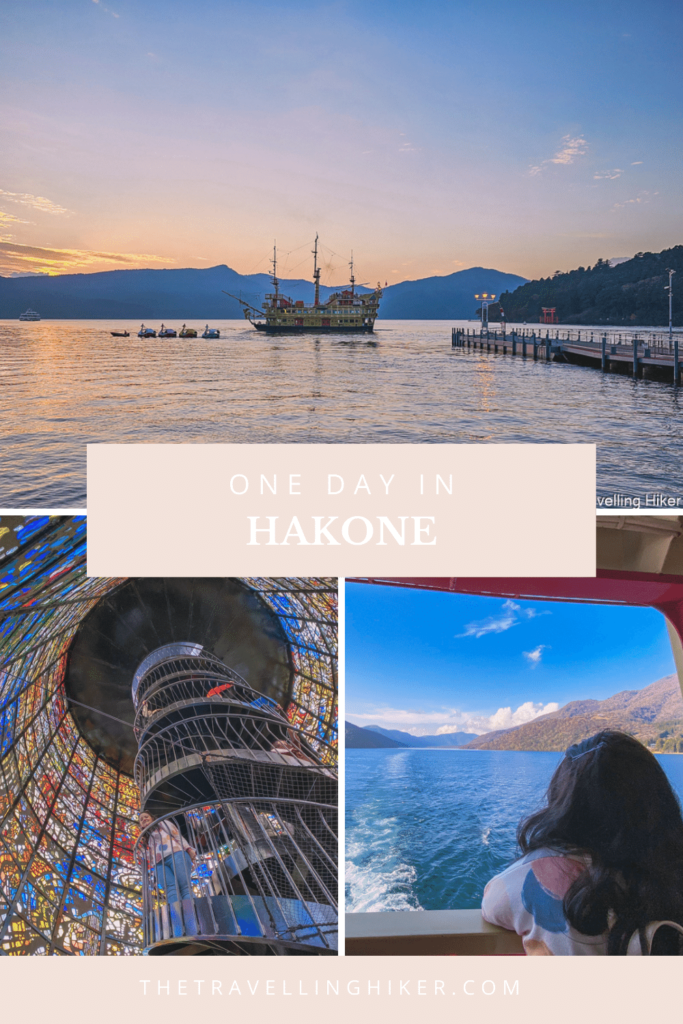
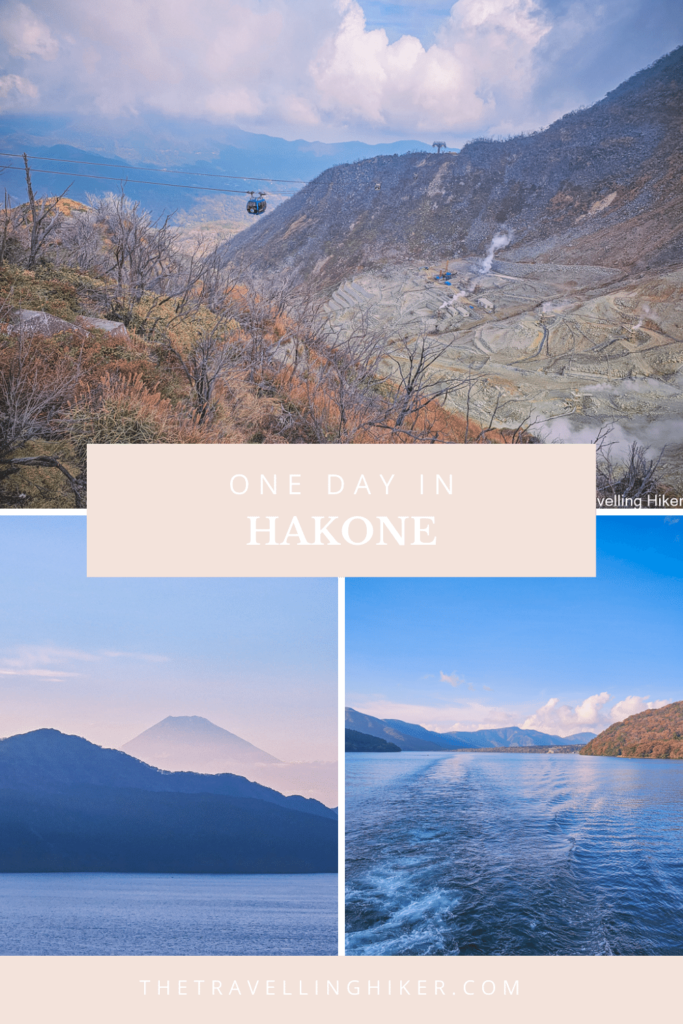

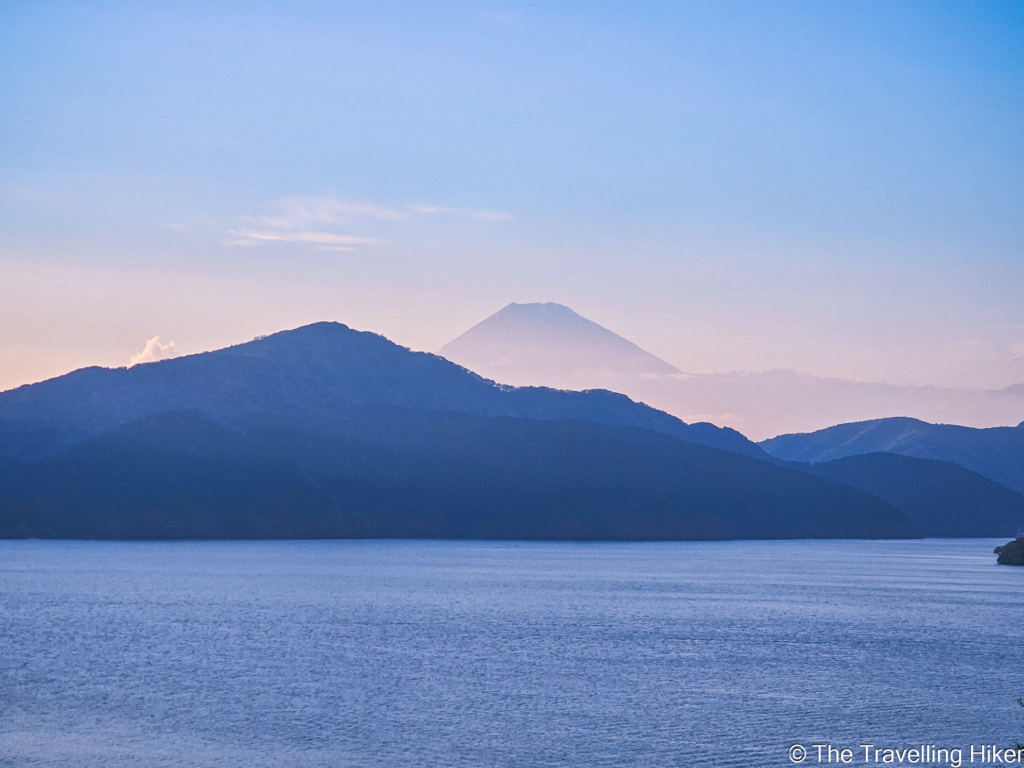
Pingback: 3 Amazing Day Trips From Tokyo - The Travelling Hiker